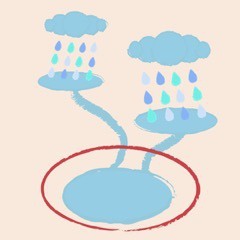Environmentally Concentrated Becquerel Measurement Project
In the “East Japan Soil Becquerel Measurement Project”, the policy is to exclude locations where radioactive cesium is concentrated (micro hotspots) rather than the surrounding area from the project's measurement targets, in order to be able to compare the pollution concentrations across East Japan with one another.
If hotspots are included, when the value is converted to square meters, even if the area is not a high pollution level, it causes an extreme misunderstanding such as "the pollution in the controlled area".
However, the issue of micro-hotspots is also important, not overlooked.
Since micro hotspots are a limited range, they can be removed to reduce the risk of exposure and scattering if they are measured and high.
Therefore, at the data site of everyone, apart from the soil project, we have prepared a project for measuring micro hotspots, entitled "Environmentally Concentrated Becquerel Measurement Project". We classified the place where concentration is likely to occur into 12 types and displayed them with illustrations and classification names. By clicking on the category name, you will be able to view the detailed measurement results of the hotspots that correspond to that category point.
The collection and measurement has been conducted mainly by Hotspot Investigators for Truth (abbr. HIT), which is a group that focuses on measuring hotspots.
The measuring instruments owned by HIT have also cleared the accuracy test of "everyone's data site".
At HIT, we mainly measure micro hotspots in the suburbs of Tokyo, Fukushima Prefecture and Tochigi Prefecture. And, depending on the survey results, we will keep in contact with the administration and lead to actions such as decontamination as needed to protect people from unnecessary exposure.
Hot spots are often moved due to topography factors such as easy accumulation of water, and even if they are decontaminated, they may be recollected. I think that I should check continuously. Thank you for your support.
I started this project ~ Hotspot is abandoned! ~
The opportunity goes back to the beginning of 2012. It was in January 2012 that the Ministry of the Environment formulated a full-scale decontamination field plan and created decontamination guidelines and special measures law. After that, the word "0.23μSv / h" suddenly appeared in the newspaper. Because I did not understand the meaning well, I examined it.













